
Multi-monitor setup often leads to multiple issues on Linux but I am not going to discuss those issues in this article. I have rather a positive article on multiple monitor support on Linux.
If you are using multiple monitors, perhaps you would like to set up a different wallpaper for each monitor. I am not sure about other Linux distributions and desktop environments, but Ubuntu with GNOME desktop doesn’t provide this functionality on its own.
Fret not! In this quick tutorial, I’ll show you how to set a different wallpaper for each monitor on Linux distributions.
Setting up a different wallpaper for each monitor on Ubuntu
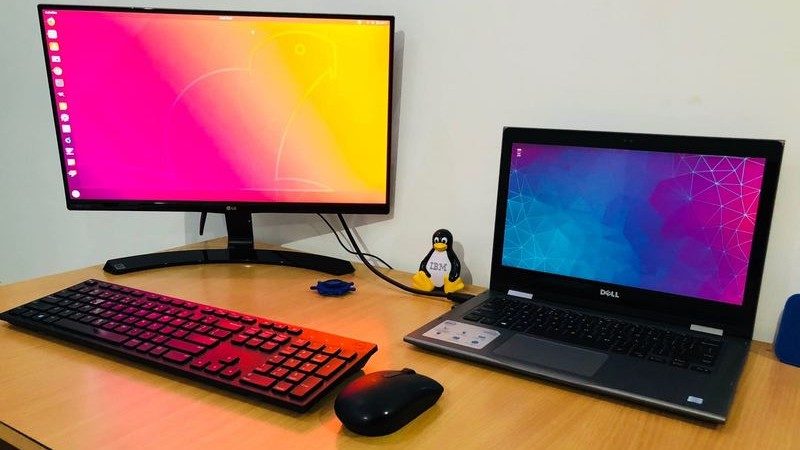
I am going to use a nifty tool called HydraPaper for setting different backgrounds on different monitors. HydraPaper is a GTK based application to span different backgrounds for each monitor in GNOME desktop environment.
Features of HydraPaper
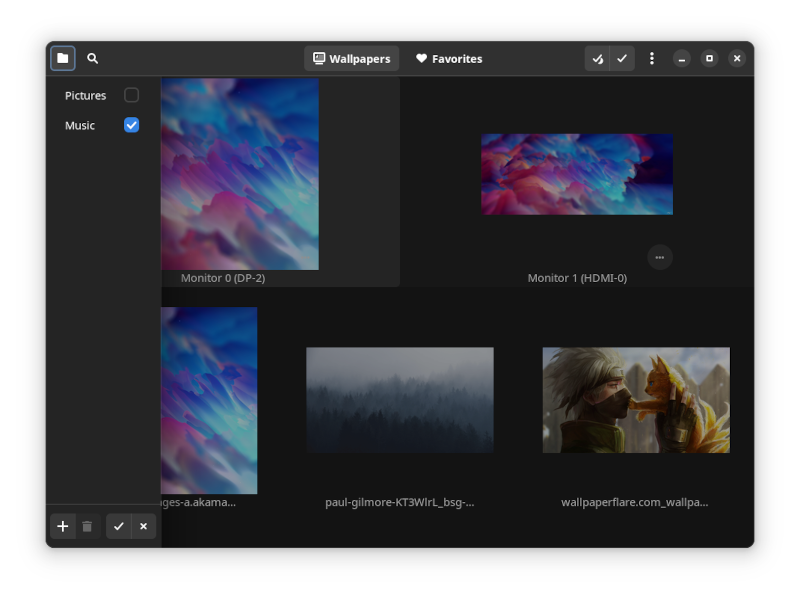
HydraPaper lets you add your custom wallpaper collection, organize/select the folders you want, and pick wallpapers conveniently.
Some of the essential features include:
- Manager folder collection (toggle them in a single click as required).
- Pick a favorite wallpaper and add them to your favorite collection.
- Position the wallpaper as you prefer (zoom, fit with a black background/blur, center, and more)
- Ability to set a random wallpaper quickly from your collection, if that’s how you decide.
- Customize the wallpaper manager experience with dark mode, choose to save wallpaper separately, clear cache, etc.
- CLI support
- Single spanned wallpaper mode to apply across multi-monitors
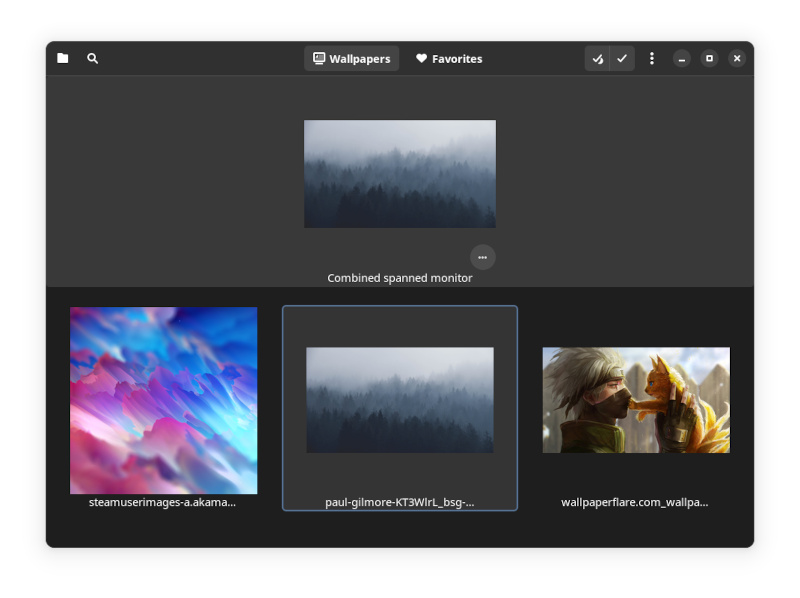
It is pretty simple to use; you can pick and select wallpapers for different monitors or use the single spanned wallpaper mode from the options to apply one across multi-monitors.
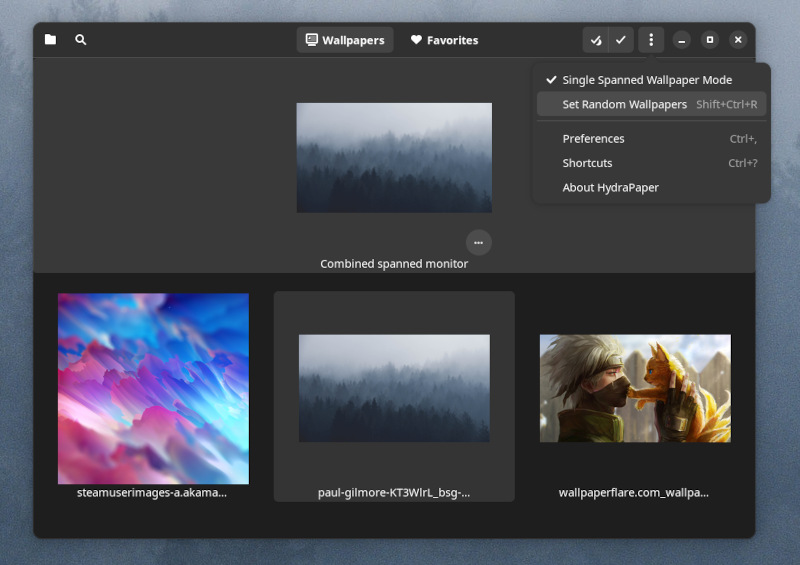
You get to choose/add/delete folders, adjust the position, add favorites, and apply the wallpaper for dark mode.
Install HydraPaper on Linux using Flatpak
HydraPaper can be installed easily using Flatpak.
You can refer to this article to learn how to enable FlatPak support on your distribution. Once you have the FlatPak support enabled, just use this command to install it.
flatpak install flathub org.gabmus.hydrapaperUsing HydraPaper for setting different background on different monitors
Once installed, just look for HydraPaper in the application menu and start the application. You’ll see images from your Pictures folder here because by default the application takes images from the Pictures folder of the user.
You can add your own folder(s) where you keep your wallpapers. Do note that it doesn’t find images recursively. If you have nested folders, it will only show images from the top folder.
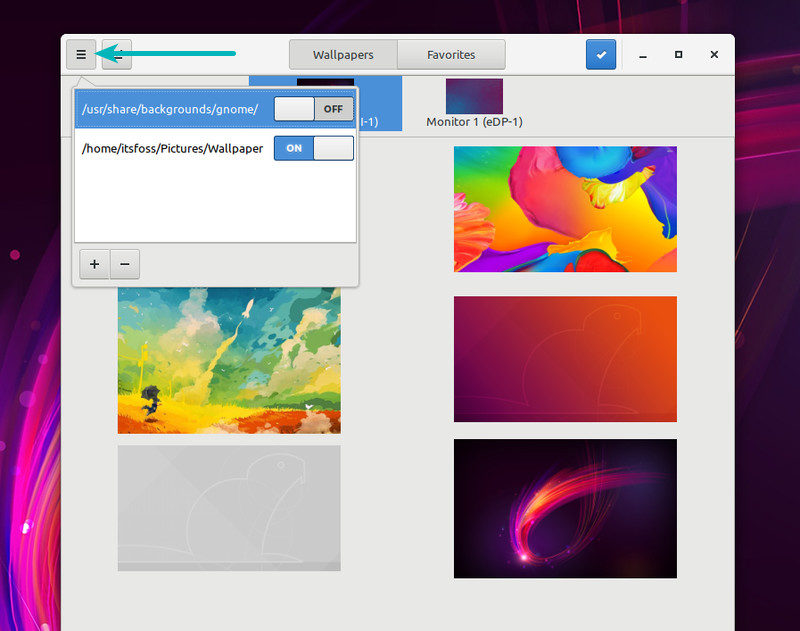
Using HydraPaper is absolutely simple. Just select the wallpapers for each monitor and click on the apply button at the top. You can easily identify external monitor(s) termed with HDMI.
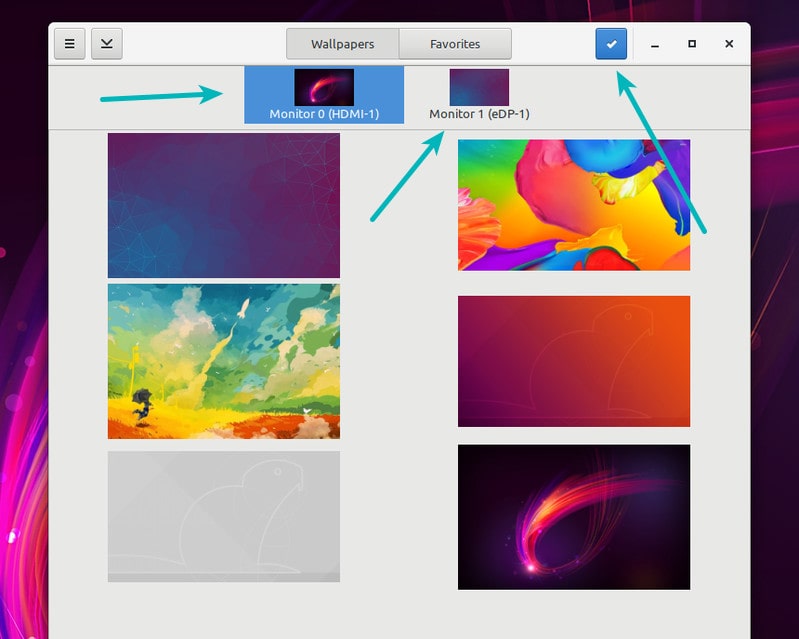
You can also add selected wallpapers to ‘Favorites’ for quick access. Doing this will move the ‘favorite wallpapers’ from Wallpapers tab to Favorites tab.
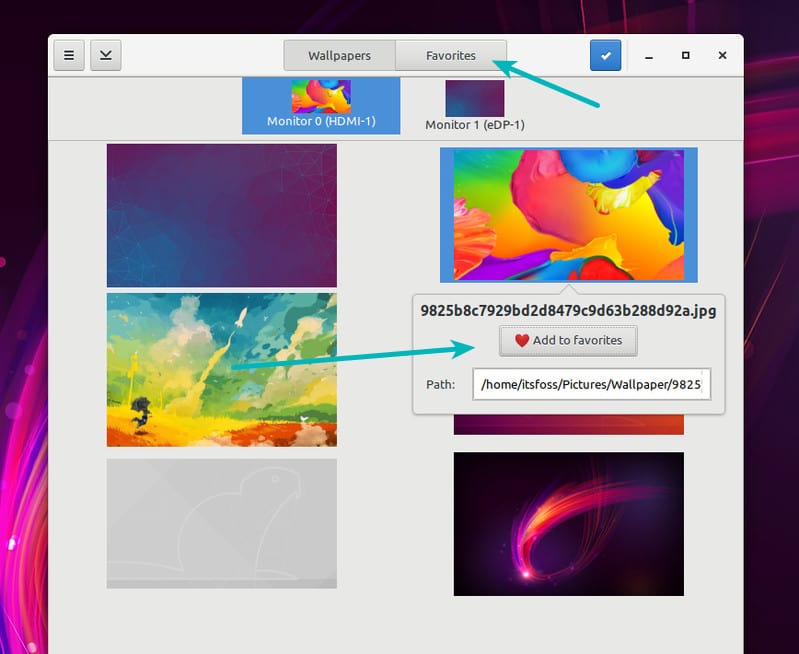
You may also set random wallpapers. You can also span the same wallpaper across all the monitors.

You don’t need to start HydraPaper at each boot. Once you set a different wallpaper for different monitor, the settings are saved and you’ll see your chosen wallpapers even after restart. This would be expected behaviour of course but I thought I would mention the obvious.
One big downside of HydraPaper is in the way it is designed to work. You see, HydraPaper combines your selected wallpapers into one single image and stretches it across the screens giving an impression of having different background on each display. And this becomes an issue when you remove the external display.
For example, when I tried using my laptop without the external display, it showed me an background image like this.
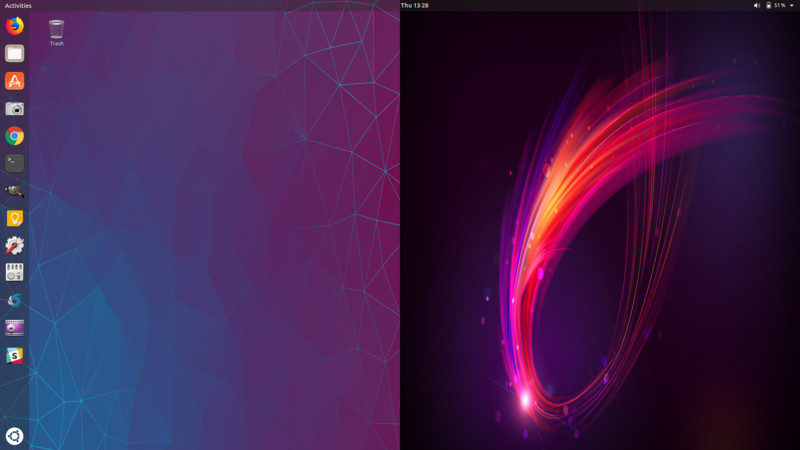
Quite obviously, this is not what I would expect.
Did you like it?
HydraPaper makes setting up different backgrounds on different monitors a painless task. It supports more than two monitors and monitors with different orientation. Simple interface with only the required features makes it an ideal application for those who always use dual monitors.
How do you set different wallpaper for different monitor on Linux? Do you think HydraPaper is an application worth installing?
Do share your views and if you find this article, please share it on various social media channels such as Twitter and Reddit.

